-
About
- About Listly
- Community & Support
- Howto
- Chrome Extension
- Bookmarklet
- WordPress Plugin
- Listly Premium
- Privacy
- Terms
- DMCA Copyright
- © 2010-2025 Boomy Labs
 Sayali Kedari
Sayali Kedari
Listly by Sayali Kedari
A World Heritage Site is a place that is listed by the United Nations Educational, Scientific and Cultural Organization (UNESCO) as being of outstanding cultural or physical significance to the common heritage of humanity. Hence, it is essential that we preserve each site. These mesmerizing sites are certainly new additions to your bucket list of 2015!
Here is the list of 10 best new inscribed properties (natural and mixed) added into the World Heritage List (comprising 1031 sites) in 2015..

Rjukan–Notodden Industrial Heritage Site comprises hydroelectric power plants, transmission lines, factories, transport systems and towns. Located in Norway, this site is created with an objective to protect the industrial landscape around Lake Heddalsvatnet. The landscape is centered around the plant built by the Norsk Hydro to produce fertilizer from atmospheric nitrogen. This site is the example of the global industrialization in the early 20th century.
The image shows Rjukan, seen from top of Krosso Aerial Cableway.
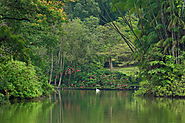
Singapore Botanical Gardens demonstrate the evolution of a British tropical colonial botanic garden that has become a modern world-class scientific institution used for both conservation and education. Located in Singapore, it is the only botanic garden that is open every single day of the year and does not charge any admission fee, except for the National Orchid Garden. The northern and southern ends of the garden are around 2.5 km (1.6 mi) far away from each other.
The image shows the Swan Lake, which is an artificial lake in the garden and populated with the swans.
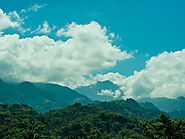
Blue and John Crow Mountains encompasses a rugged and extensively forested mountainous region in the south-east of Jamaica. The Blue and John Crow Mountains National Park was added into the World Heritage List for mixed criteria (cultural and natural) in 2015. It is globally known for its biodiversity, since it has high proportion of endemic plant species, especially lichens, mosses and certain flowering plants.
The image shows the aerial view of the Blue and John Crow Mountains in Jamaica.
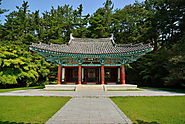
Baekje Historic Areas are located in the mountainous mid-western region of the Republic of Korea. They consist of eight archaeological sites dating from 475 to 660 CE. All these sites represent the later period of the Baekje Kingdom, which had considerable technological, religious and cultural impact on the ancient East Asian kingdoms in Korea, China and Japan. These sites are a crucial source for the understanding of Baekje, one of the Three Kingdoms on the Korean peninsula.
The image shows the Samchungsa Shrine.
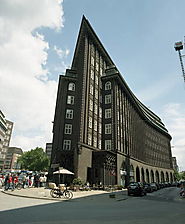
Speicherstadt and the adjacent Kontorhaus district are two densely built urban areas in the centre of the port city of Hamburg. Speicherstadt is one of the largest coherent historic ensembles of port warehouses in the world. The Kontorhaus district features six very large office complexes. This site is an indicator of rapid growth in international trade in the late 19th and early 20th centuries.
The image shows the eastern tip and southern facade from the southeast, of the Chilehaus, located in Kontorhausviertel.
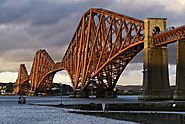
The Forth Bridge is a railway bridge spanning the estuary of the Forth River in Scotland and the world’s longest multi-span cantilever bridge. It is considered an iconic structure and a symbol of Scotland. The bridge is built on the principle of the cantilever bridge and is the first major structure in Britain to be constructed of steel. It has a total length of 8,296 feet (2,528.7 m).
The image shows the view of the Forth Bridge from the town of South Queensferry.
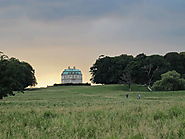
The Par force hunting landscape in North Zealand is a collection of hunting grounds and forests north of Copenhagen. The three main areas: the hunting forests of Store Dyrehave and Gribskov and the hunting park of Jægersborg Dyrehave/Jægersborg Hegn, together form the landscape. The par force hunt provided a basis for demonstrating the absolute power of the Danish monarch by developing orthogonal connecting roads across the landscape.
The image shows the par force hunting landscape in North Zealand in Denmark.

Tusi Sites is the 48th World Heritage Site in China. This property encompasses remains of several tribal domains whose chiefs were appointed by the central government as ‘Tusi’, hereditary rulers from the 13th to the early 20th century. The political system was used for one thousand years and it aimed at unifying national administration while simultaneously allowing ethnic minorities to retain their customs and way of life.
The image shows the core area of the domain and Lingxi river in Laosicheng.
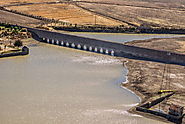
Aqueduct of Padre Tembleque or Zempoala Aqueduct, is a Mexican aqueduct located between the towns of Zempoala, Hidalgo and Otumba, in the State of Mexico. This heritage canal system surrounds a water catchment area, springs, canals, distribution tanks and arcaded aqueduct bridges. This hydraulic system indicates the exchange of influences between the European tradition of Roman hydraulics and traditional Meso-American construction techniques.
The image shows the aerial view of the Los Arcos domain in Mexico.
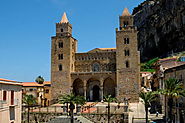
Arab-Norman Palermo and the Cathedral Churches of Cefalú and Monreale include a series of nine civil and religious structures dating from the era of the Norman kingdom of Sicily (1130-1194). The site indicates the fruitful coexistence of people of different origins and religions (Muslim, Byzantine, Latin, Jewish, Lombard and French). The Arab-Norman style originated from the fact that the new Norman rulers incorporated the best practices of Arab and Byzantine architecture into their own art.
The image shows the Monreale Cathedral.
